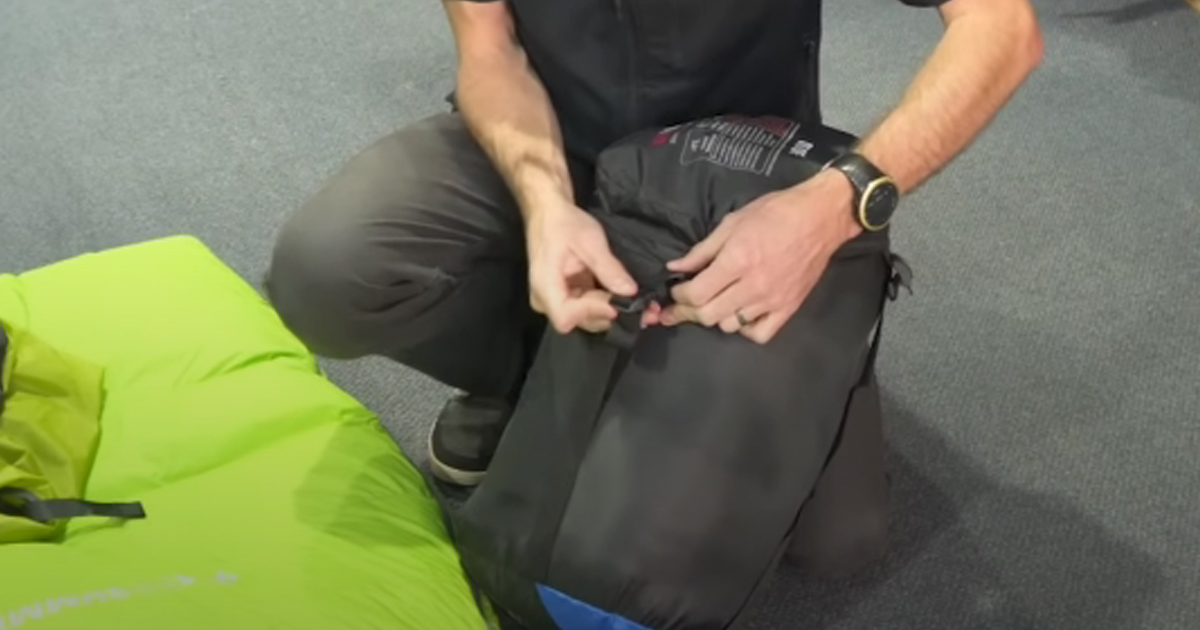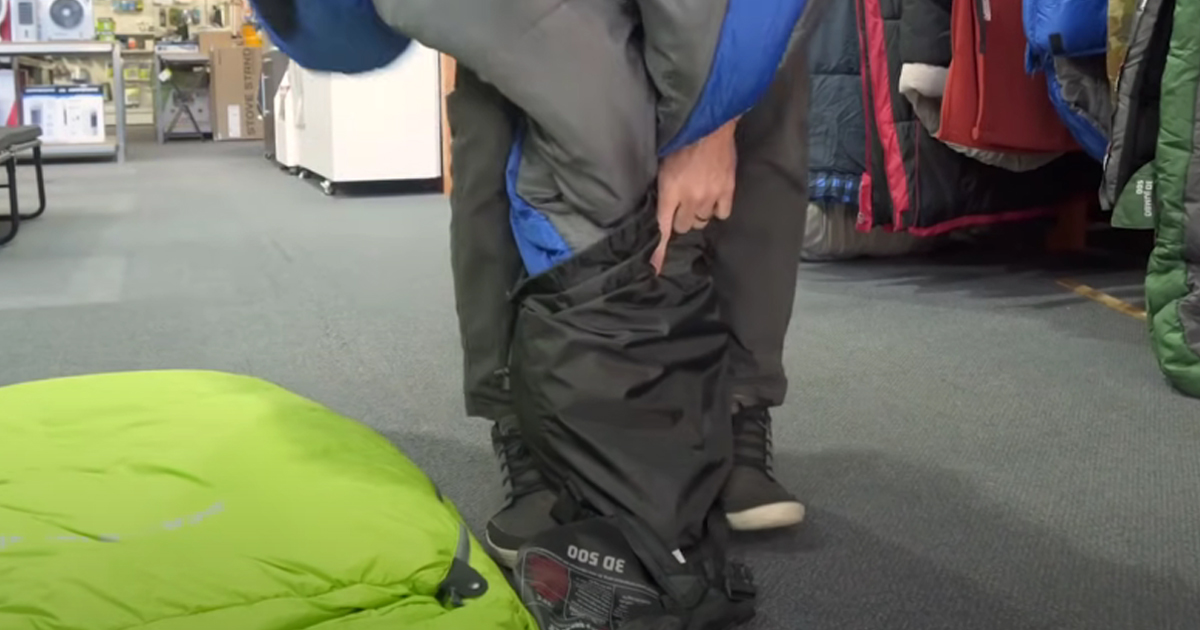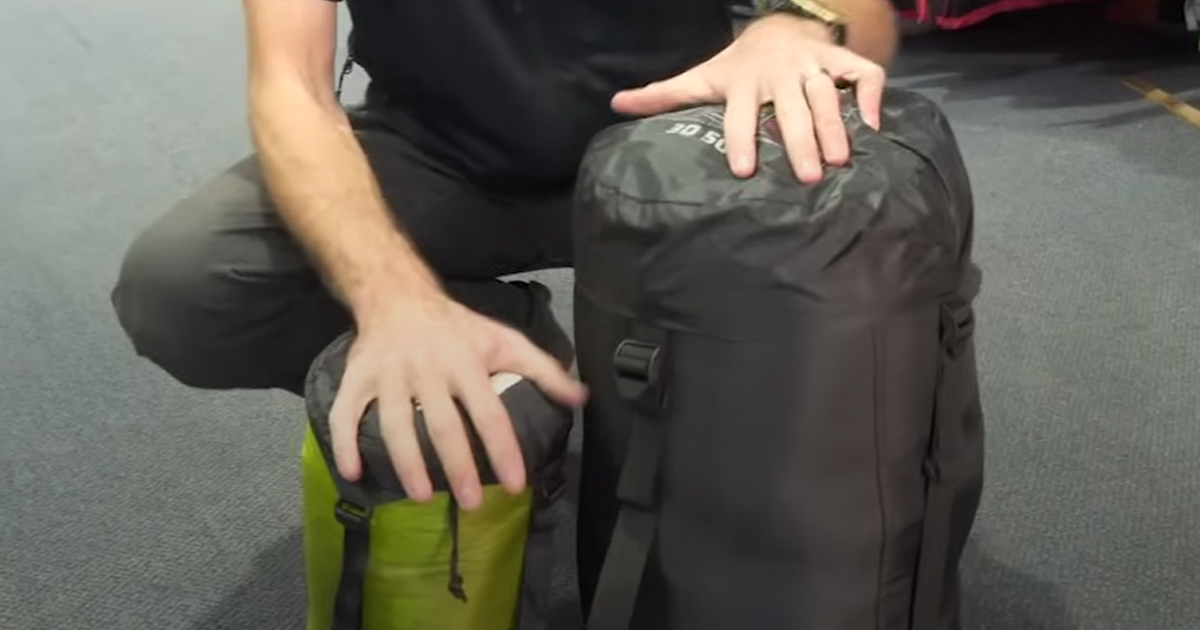How To Pack A Sleeping Bag In A Backpack: 10 Steps [Tricky DIY]
I know firsthand the challenges of packing efficiently for a camping trip. One essential item on the packing list is a sleeping bag, but knowing how to attach it to your backpack correctly can be tricky.
I loosen all the compression straps before packing a sleeping bag in my backpack for maximum space. I compress my sleeping bag and place it as the first bulky item. I then fill the remaining space with extra clothing, my sleeping bag liner, and any essentials for my baby and pet.
I’ll share my experience and expertise on the importance of proper sleeping bag attachment, choosing the right backpack, different methods for attaching your sleeping bag, strategic positioning, essential safety tips, and more.
How to Pack A Sleeping Bag in A Backpack: 10 Tricky Steps

My sleeping bag is one of the most crucial items I must pack carefully. Here are some tips on packing a sleeping bag for my backpack:
Hip Belt and Shoulder Strap Adjustment
Before I pack my sleeping bag, I must ensure my backpack fits me correctly. Here’s how I do it:
- Loosen all straps: Loosen all straps on your backpack, including the hip belt and shoulder straps.
- Put on the backpack: I understand the significance of proper packing before a trip. Ensure the pack is centered on your back, with the hip belt resting on your iliac crest and the shoulder straps adjusted to the appropriate height.
- Tighten the hip belt: Tighten the hip belt first, starting from the front and working your way to the back. The hip belt should be snug but not too tight.
- Adjust the shoulder straps: Adjust the shoulder straps next, starting from the bottom and working your way up. Your straps should be snug but not dig into your skin.
Proper Distribution of Weight and Adjustments
Now that your backpack fits appropriately, it’s time to pack your sleeping bag. Here are my tips for proper weight distribution and adjustments:
- Use a compression sack: Pack your sleeping bag in a compression sack. This will reduce the space in your backpack and keep it dry.
- Pack at the bottom: Pack your sleeping bag in your backpack so it sits against your back. You will be better able to balance yourself by distributing your weight evenly.
- Use other gear: Use other equipment to fill in gaps around your sleeping bag. This will help keep it from shifting around during your hike.
Tips for Maintaining Proper Posture and Balance
Proper posture and balance are crucial when hiking with a backpack. Here are my tips for maintaining both:
- Keep your center of gravity: Put your weight on your hips by bending your knees slightly while walking. As a result, you can maintain your balance and avoid falling.
- Keep your back straight: Keep your back straight while hiking to maintain proper posture and avoid back pain.
- Take breaks often: Take breaks often during your hike to give your back and shoulders a rest.
Packing Sleeping Bag in A Backpack: Choosing the Right Bag
I find packing a sleeping bag tricky, but after years of trial and error, I’ve finally discovered the most effective way. Let me share my expertise with you on choosing a backpack that works well with your sleeping bag, assessing compatibility, understanding attachment points, and preparing your gear and sleeping bag.
Choosing the Right Backpack for Sleeping Bag Attachment
When I’m selecting a backpack for a sleeping bag attachment, there are a few key factors I need to consider:
- Size: Your backpack should be large enough to fit your sleeping bag comfortably but not so big that it is difficult to carry.
- Weight: The weight of your backpack is also essential, especially if you are planning a long or strenuous hike.
- Design: Look for backpacks with loops, straps, or external frames designed to attach a sleeping bag.
Assessing Compatibility
I must ensure my sleeping bag is compatible with my backpack before attaching it. I should consider a few things:
- Size and shape: Make sure your sleeping bag fits comfortably inside your backpack without taking up too much space or causing discomfort.
- Attachment points: Look for loops, straps, and external frames on your backpack designed for attaching a sleeping bag. Make sure your sleeping bag has corresponding attachment points.
- Weight and distribution: Consider the weight and distribution of your gear overall and how much your backpack can comfortably carry.
Understanding Attachment Points
When I attach a sleeping bag to my backpack, I must understand the various attachment points and how to utilize them.
- Loops: A loop is a small ring of fabric attached to your backpack so you can connect your sleeping bag. Simply attach a strap through the loop to your sleeping bag.
- Straps: Straps are typically located on the bottom or sides of your backpack. These can compress your sleeping bag and keep it in place.
- External frames: If your backpack has an outer structure, attaching your sleeping bag directly to the frame using straps
or loops is possible.
Preparing Your Backpack and Sleeping Bag for Attachment
Before I attempt to attach my sleeping bag to my backpack, there are a few things I should do to prepare.
- Compression sacks: Purchase a compression sack for your sleeping bag. This will make it easier to pack and attach to your backpack.
- Folding vs. rolling: Decide whether you want to fold or roll your sleeping bag. Folding can help you save space in your backpack while moving, which can help your sleeping bag stay fluffier and more comfortable.
Sleeping Bag Packing: Securely Attaching

One crucial step in packing my sleeping bag is securely attaching it to my backpack. I have found several methods for securing sleeping bags and backpacks, each with pros and cons.
Built-in Straps: Bottom Loops and Top Straps
I have noticed that many backpacks come with built-in straps designed explicitly for attaching my sleeping bag. These handy straps typically include bottom loops and top straps near the top of the backpack’s main compartment. To connect my sleeping bag using these straps, I should follow these steps:
- Pack it in a compression sack to make it more compact.
- Thread the compression sack through the bottom loops and secure it with the top straps.
- Tighten the straps to attach your sleeping bag securely.
| Pros | Cons |
|---|---|
| Built-in straps are convenient and easy to use. | Some backpacks may not have built-in straps, so this method may not be an option. |
| They provide a secure attachment that prevents your sleeping bag from bouncing around while you hike. | Depending on the size and shape of your sleeping bag, it may be challenging to attach using only the bottom loops and top straps. |
Utilizing Additional Gear: Carabiners, Paracord, Bungee Cords
If my backpack doesn’t have built-in straps or if I prefer a more customizable attachment method, I can use additional gear to secure my sleeping bag. Some everyday items I can use for this method include carabiners, paracords, and bungee cords. I will follow these steps to attach my sleeping bag using additional gear:
- Make sure your sleeping bag is packed in a compression sack.
- Use carabiners to attach the compression sack to the outside of your backpack.
- Use paracord or bungee cords to secure the compression sack to your backpack’s side straps or other attachment points.
| Pros | Cons |
|---|---|
| This method allows a more customized attachment to accommodate backpacks and sleeping bags. | Attaching your sleeping bag using additional gear can take more time and effort. |
| It is an excellent option if your load doesn’t have built-in straps. | There is a risk of your sleeping bag bouncing or shifting if the attachment points are insecure. |
Backpacking with A Sleeping Bag: Safety Tips and Precautions
I know the importance of proper gear organization and securing your belongings. Remember a few essential safety tips and precautions when packing your sleeping bag.
Securing Your Gear: The Checklist
Before hitting the trails, it’s essential to double-check that your gear is securely packed. A poorly packed backpack is a nuisance and can pose safety hazards. Here are a few tips to ensure your bag stays in place:
- Organize your gear: Divide it into sections and place them in corresponding compartments. This not only makes it easier
to find what you need, but it also distributes the weight evenly. - Use compression straps: These straps can help compress your sleeping bag and other items, making them more compact and accessible.
- Pack heavy items close to your back: Placing heavier items closer helps distribute the weight and improve your balance.
- Use a rain cover: A rain cover can protect your gear from moisture in case of unexpected rainfall.
Poorly Attached Sleeping Bags: Safety Concerns
When my sleeping bag is poorly attached, I face safety hazards like falls and injuries. It also makes me uncomfortable and affects the quality of my sleep. Let me share with you the dangers of a poorly attached sleeping bag:
- Overloading the backpack: When a sleeping bag is not packed correctly, it can take up unnecessary space and add to the weight of your gear. This can cause discomfort and may result in back pain and sore muscles.
- Unstable backpack: A poorly packed sleeping bag can cause unbalanced and unstable gear. This can increase the risk of falls or injury while hiking.
- Difficulty accessing other gear: If a sleeping bag is not securely packed, it can shift around and make accessing other necessary equipment, such as food and water, complex.
Conclusion
When preparing for a backpacking trip, I must pack a sleeping bag. As a traveling mother, balancing everything I need for myself, my baby, and my pet can be stressful. With the right gear and proper attachment of my sleeping bag, I can ensure a comfortable and safe place to sleep at night.
I always remember that there are different types of backpacks suitable for sleeping bag attachment, various methods for attaching them, and strategic positioning in my pack. I follow the packing checklist and tips provided in this guide to avoid common mistakes and prioritize safety.
So, I packed my backpack smartly, grabbed my little one and my pet, and we were ready to hit the road for the adventure of a lifetime.
FAQs
Should You Roll or Stuff A Sleeping Bag?
I like to think of sleeping bags as stuff sacks for a reason. Instead of rolling them, I prefer to stuff them back into their respective sacks. Whether my sleeping bag is filled with down or synthetic material, stuffing it instead of rolling removes more air and makes it more compact when packed.


